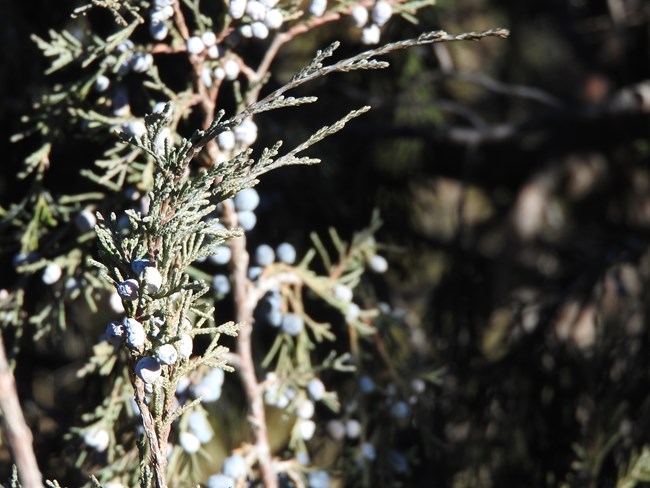Last updated: November 24, 2021
Article
Rocky Mountain Juniper

NPS
Rocky Mountain juniper has been commonly used by many different Native American groups. Cheyenne people drank a tea steeped with juniper leaves to soothe sore throats. Cheyenne women used the tea to speed the process of childbirth. The Cheyenne also used the wood of the Rocky Mountain juniper to craft flutes, lance shafts and bows. The Sioux brewed a tea using Rocky Mountain juniper that was used to treat colds, fevers and other ailments.
Rocky Mountain juniper is an important tree species for wildlife. The twigs and and leaves are browsed by deer and elk. The fleshy, berry-like cones are a favored food for many bird species including cedar waxwings. Besides providing food, the branches of the Rocky Mountain juniper provide shelter and nesting sites for many bird species including juncos, sparrows, and robins.
Rocky Mountain juniper is very similar in appearance to Eastern red cedar (Juniperus virginiana). Eastern red cedar is not native to the western Great Plains. However, it has naturalized to the area and has resulted in reduced biological diversity in both grasslands and forests, with potentially negative impacts on sensitive species. Rocky Mountain juniper can be distinguished from Eastern red cedar by its blunt leaves that do not overlap. Also, Rocky Mountain junipers tend to be smaller than Eastern red cedars.
At Scotts Bluff National Monument, Rocky Mountain juniper can be found in lowland ravines and on the slopes of Scotts Bluff and South Bluff.
